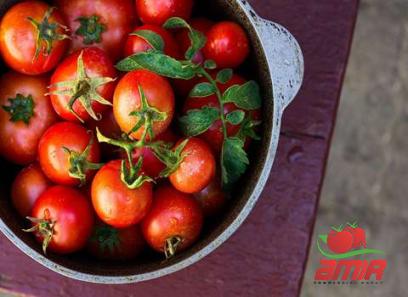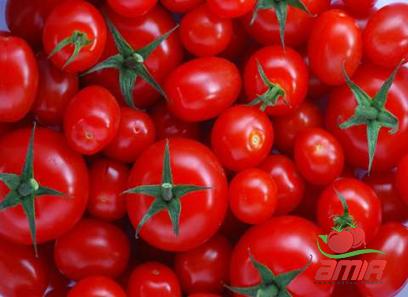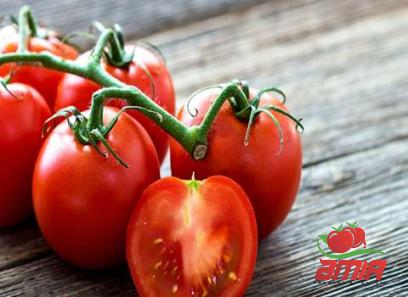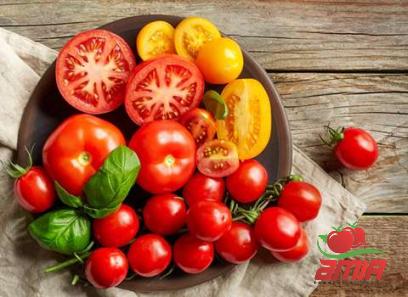Tomato paste, or “pomodoro concentrato,” holds a special place in Italian cuisine. From the sun-kissed hills of Sicily to the bustling streets of Rome, tomato paste is a staple ingredient that adds depth and richness to a myriad of dishes. In this comprehensive guide, we delve into the history, production, and culinary uses of tomato paste in Italian cooking. Join us on a journey through the vibrant world of Italian flavors and traditions as we unravel the secrets of this beloved condiment. The Evolution of Tomato Paste in Italy: The history of tomato paste in Italy dates back to the 18th century when tomatoes first arrived on European shores from the New World. Initially regarded with suspicion due to their resemblance to the toxic nightshade plant, tomatoes gradually gained acceptance as a versatile and flavorful ingredient in Italian cuisine. The invention of tomato paste can be attributed to the need for a concentrated form of tomatoes that could be preserved for long periods. In the early days, tomatoes were sun-dried or cooked down to a thick paste that could be stored in jars or cans. This concentrated form of tomatoes not only retained the essence of the fruit but also made it easier to transport and use in various recipes. Over time, the production techniques for tomato paste evolved, leading to the creation of a product that is now synonymous with the bold flavors of Italian cooking. Production Process of Tomato Paste: The production of tomato paste is a meticulous process that requires precision and expertise to capture the full flavor of the fruit. The journey begins in the sun-drenched fields of Italy, where ripe and juicy tomatoes are handpicked at the peak of freshness. These tomatoes are then washed, sorted, and crushed to extract the pulp and juice. The next step involves reducing the tomato pulp through a process of evaporation to remove excess water content. This concentrated mixture is then strained to remove any seeds or skins, resulting in a smooth and velvety paste.

.
 Finally, the tomato paste is packed into jars or cans, ready to be enjoyed in kitchens around the world. Types of Tomato Paste: In Italian cuisine, there are several types of tomato paste that vary in texture, flavor, and consistency. One of the most common types is “double-concentrated” tomato paste, which has been cooked down to reduce moisture content and intensify the flavor. This type of tomato paste is a versatile ingredient that can be used in a wide range of recipes, from pasta sauces to soups and stews. Another popular variety is “triple-concentrated” tomato paste, which undergoes an additional reduction process to create a rich and robust flavor profile. This type of tomato paste is prized for its intense taste and deep red color, making it ideal for adding a burst of umami to dishes. Culinary Uses of Tomato Paste in Italian Cooking: Tomato paste is a fundamental ingredient in Italian cuisine, adding depth, richness, and acidity to a multitude of dishes. One of the classic uses of tomato paste is in the preparation of pasta sauces, such as marinara and bolognese. The concentrated flavor of tomato paste infuses the sauce with a vibrant taste that complements the other ingredients. In addition to pasta sauces, tomato paste is also used in soups, stews, and braises to add a savory note and thicken the liquid. It can be mixed with olive oil, garlic, and herbs to create a flavorful base for pizzas and bruschettas. Furthermore, tomato paste is a key component in traditional dishes like Osso Buco and Chicken Cacciatore, where its tangy sweetness balances out the richness of the meat. Health Benefits of Tomato Paste: Apart from its culinary appeal, tomato paste also offers a range of health benefits due to its high content of lycopene, a powerful antioxidant. Lycopene has been linked to reducing the risk of certain types of cancer, improving heart health, and supporting overall well-being. Additionally, tomato paste is a good source of vitamins C and K, as well as minerals like potassium and manganese.
Finally, the tomato paste is packed into jars or cans, ready to be enjoyed in kitchens around the world. Types of Tomato Paste: In Italian cuisine, there are several types of tomato paste that vary in texture, flavor, and consistency. One of the most common types is “double-concentrated” tomato paste, which has been cooked down to reduce moisture content and intensify the flavor. This type of tomato paste is a versatile ingredient that can be used in a wide range of recipes, from pasta sauces to soups and stews. Another popular variety is “triple-concentrated” tomato paste, which undergoes an additional reduction process to create a rich and robust flavor profile. This type of tomato paste is prized for its intense taste and deep red color, making it ideal for adding a burst of umami to dishes. Culinary Uses of Tomato Paste in Italian Cooking: Tomato paste is a fundamental ingredient in Italian cuisine, adding depth, richness, and acidity to a multitude of dishes. One of the classic uses of tomato paste is in the preparation of pasta sauces, such as marinara and bolognese. The concentrated flavor of tomato paste infuses the sauce with a vibrant taste that complements the other ingredients. In addition to pasta sauces, tomato paste is also used in soups, stews, and braises to add a savory note and thicken the liquid. It can be mixed with olive oil, garlic, and herbs to create a flavorful base for pizzas and bruschettas. Furthermore, tomato paste is a key component in traditional dishes like Osso Buco and Chicken Cacciatore, where its tangy sweetness balances out the richness of the meat. Health Benefits of Tomato Paste: Apart from its culinary appeal, tomato paste also offers a range of health benefits due to its high content of lycopene, a powerful antioxidant. Lycopene has been linked to reducing the risk of certain types of cancer, improving heart health, and supporting overall well-being. Additionally, tomato paste is a good source of vitamins C and K, as well as minerals like potassium and manganese.
..
 When consumed as part of a balanced diet, tomato paste can contribute to a healthy lifestyle and enhance the nutritional value of meals. Its versatility in cooking makes it easy to incorporate into a variety of recipes, ensuring that you can enjoy the benefits of this flavorful condiment in your daily routine. Innovative Uses of Tomato Paste in Modern Cooking: While tomato paste has a long-established presence in traditional Italian cuisine, chefs and home cooks alike are finding new and innovative ways to incorporate this versatile ingredient into modern recipes. From tomato paste-infused cocktails to umami-packed dressings and marinades, the possibilities are endless when it comes to experimenting with tomato paste in the kitchen. Some creative uses of tomato paste include adding it to chili con carne for an extra depth of flavor, mixing it into meatloaf for a tangy kick, or stirring it into hummus for a Mediterranean twist. Additionally, tomato paste can be used as a natural food coloring agent in baked goods or as a base for homemade ketchup and barbecue sauce. Conclusion: Tomato paste is more than just a condiment – it is a symbol of Italian culinary heritage and a testament to the timeless appeal of simple yet flavorful ingredients. Whether used in classic recipes or innovative creations, tomato paste continues to captivate taste buds and inspire culinary adventures around the world. So the next time you reach for a jar of tomato paste, remember the rich history and vibrant flavors that make it an essential part of Italian cuisine. Mangia bene! (Eat well!) In conclusion, tomato paste plays a crucial role in Italian cuisine, adding depth and richness to a wide range of dishes. From its humble origins to its modern-day culinary applications, tomato paste continues to be a beloved ingredient that embodies the essence of Italian flavors. Whether used in traditional recipes or as a creative twist in contemporary cooking, tomato paste remains a cornerstone of Italian culinary heritage. So go ahead, embrace the bold flavors and vibrant colors of tomato paste in your next culinary masterpiece and savor the taste of Italy in every bite. Buon Appetito! (Enjoy your meal!) Thank you for the feedback. I will expand on the article with additional information. — Tips for Buying and Storing Tomato Paste: When shopping for tomato paste, opt for reputable brands that use high-quality tomatoes and minimal additives. Look for options that come in tubes or BPA-free cans to preserve the freshness and flavor of the paste. Double-check the label to ensure that the product is free from artificial colors, preservatives, and added sugar. Once you’ve purchased your tomato paste, store it in a cool, dark place away from direct sunlight.
When consumed as part of a balanced diet, tomato paste can contribute to a healthy lifestyle and enhance the nutritional value of meals. Its versatility in cooking makes it easy to incorporate into a variety of recipes, ensuring that you can enjoy the benefits of this flavorful condiment in your daily routine. Innovative Uses of Tomato Paste in Modern Cooking: While tomato paste has a long-established presence in traditional Italian cuisine, chefs and home cooks alike are finding new and innovative ways to incorporate this versatile ingredient into modern recipes. From tomato paste-infused cocktails to umami-packed dressings and marinades, the possibilities are endless when it comes to experimenting with tomato paste in the kitchen. Some creative uses of tomato paste include adding it to chili con carne for an extra depth of flavor, mixing it into meatloaf for a tangy kick, or stirring it into hummus for a Mediterranean twist. Additionally, tomato paste can be used as a natural food coloring agent in baked goods or as a base for homemade ketchup and barbecue sauce. Conclusion: Tomato paste is more than just a condiment – it is a symbol of Italian culinary heritage and a testament to the timeless appeal of simple yet flavorful ingredients. Whether used in classic recipes or innovative creations, tomato paste continues to captivate taste buds and inspire culinary adventures around the world. So the next time you reach for a jar of tomato paste, remember the rich history and vibrant flavors that make it an essential part of Italian cuisine. Mangia bene! (Eat well!) In conclusion, tomato paste plays a crucial role in Italian cuisine, adding depth and richness to a wide range of dishes. From its humble origins to its modern-day culinary applications, tomato paste continues to be a beloved ingredient that embodies the essence of Italian flavors. Whether used in traditional recipes or as a creative twist in contemporary cooking, tomato paste remains a cornerstone of Italian culinary heritage. So go ahead, embrace the bold flavors and vibrant colors of tomato paste in your next culinary masterpiece and savor the taste of Italy in every bite. Buon Appetito! (Enjoy your meal!) Thank you for the feedback. I will expand on the article with additional information. — Tips for Buying and Storing Tomato Paste: When shopping for tomato paste, opt for reputable brands that use high-quality tomatoes and minimal additives. Look for options that come in tubes or BPA-free cans to preserve the freshness and flavor of the paste. Double-check the label to ensure that the product is free from artificial colors, preservatives, and added sugar. Once you’ve purchased your tomato paste, store it in a cool, dark place away from direct sunlight.
…
 Once opened, transfer any remaining paste to an airtight container and refrigerate it to maintain its quality. Tomato paste can also be frozen in ice cube trays for easy portioning and long-term storage. Remember to check the expiration date on the packaging and use the paste within a reasonable timeframe for the best taste and texture. Regional Variations of Tomato paste in Italian Cuisine: Italy is renowned for its diverse regional cuisines, each with its own unique flavors and culinary traditions. As a result, there are variations in the use of tomato paste across different regions of Italy. For example, in the southern regions of Sicily and Campania, tomato paste is a key ingredient in traditional dishes like Sicilian Caponata and Neapolitan Pizza. In the northern regions of Lombardy and Emilia-Romagna, tomato paste is often used in hearty stews and braised meats, such as Osso Buco and Bolognese sauce. In Tuscany, tomato paste is a staple in rustic soups like Ribollita and Pappa al Pomodoro. These regional variations highlight the versatility of tomato paste in Italian cuisine and its ability to adapt to diverse cooking styles and ingredients. Homemade Tomato Paste: For enthusiasts looking to take their culinary skills to the next level, making homemade tomato paste is a rewarding and satisfying endeavor. By using fresh, ripe tomatoes and a few simple ingredients, you can create a flavorful paste that surpasses store-bought options in taste and quality. To make homemade tomato paste, start by blanching and peeling ripe tomatoes before blending them into a smooth puree. Cook the puree in a saucepan over low heat to reduce the moisture content and concentrate the flavors. Stir occasionally to prevent burning and continue cooking until the mixture has thickened to your desired consistency. Once the tomato paste has cooled, transfer it to sterilized jars or containers and store it in the refrigerator for immediate use or freeze it for long-term storage. Homemade tomato paste can elevate the taste of your dishes and provide a sense of pride in creating a kitchen staple from scratch. Tomato Paste in Italian Street Food: In addition to its prominent role in traditional Italian recipes, tomato paste is also a key ingredient in Italian street food offerings. Street vendors and food stalls across Italy showcase the versatility of tomato paste in portable and convenient dishes that cater to on-the-go diners. One popular street food featuring tomato paste is “panzerotti,” a fried turnover filled with tomato paste, mozzarella cheese, and a variety of savory fillings. These golden-brown parcels of flavor are a favorite snack in southern Italy, especially in the regions of Puglia and Calabria. Another street food delicacy is “focaccia al pomodoro,” a flatbread topped with tomato paste, olive oil, and fresh herbs that is perfect for a quick and satisfying meal. Furthermore, tomato paste is a common component in Italian sandwiches, known as “panini,” that are enjoyed by locals and tourists alike. Whether stuffed with prosciutto and arugula or grilled vegetables and cheese, these handheld delights showcase the harmonious combination of tomato paste with other ingredients for a burst of Italian flavors.
Once opened, transfer any remaining paste to an airtight container and refrigerate it to maintain its quality. Tomato paste can also be frozen in ice cube trays for easy portioning and long-term storage. Remember to check the expiration date on the packaging and use the paste within a reasonable timeframe for the best taste and texture. Regional Variations of Tomato paste in Italian Cuisine: Italy is renowned for its diverse regional cuisines, each with its own unique flavors and culinary traditions. As a result, there are variations in the use of tomato paste across different regions of Italy. For example, in the southern regions of Sicily and Campania, tomato paste is a key ingredient in traditional dishes like Sicilian Caponata and Neapolitan Pizza. In the northern regions of Lombardy and Emilia-Romagna, tomato paste is often used in hearty stews and braised meats, such as Osso Buco and Bolognese sauce. In Tuscany, tomato paste is a staple in rustic soups like Ribollita and Pappa al Pomodoro. These regional variations highlight the versatility of tomato paste in Italian cuisine and its ability to adapt to diverse cooking styles and ingredients. Homemade Tomato Paste: For enthusiasts looking to take their culinary skills to the next level, making homemade tomato paste is a rewarding and satisfying endeavor. By using fresh, ripe tomatoes and a few simple ingredients, you can create a flavorful paste that surpasses store-bought options in taste and quality. To make homemade tomato paste, start by blanching and peeling ripe tomatoes before blending them into a smooth puree. Cook the puree in a saucepan over low heat to reduce the moisture content and concentrate the flavors. Stir occasionally to prevent burning and continue cooking until the mixture has thickened to your desired consistency. Once the tomato paste has cooled, transfer it to sterilized jars or containers and store it in the refrigerator for immediate use or freeze it for long-term storage. Homemade tomato paste can elevate the taste of your dishes and provide a sense of pride in creating a kitchen staple from scratch. Tomato Paste in Italian Street Food: In addition to its prominent role in traditional Italian recipes, tomato paste is also a key ingredient in Italian street food offerings. Street vendors and food stalls across Italy showcase the versatility of tomato paste in portable and convenient dishes that cater to on-the-go diners. One popular street food featuring tomato paste is “panzerotti,” a fried turnover filled with tomato paste, mozzarella cheese, and a variety of savory fillings. These golden-brown parcels of flavor are a favorite snack in southern Italy, especially in the regions of Puglia and Calabria. Another street food delicacy is “focaccia al pomodoro,” a flatbread topped with tomato paste, olive oil, and fresh herbs that is perfect for a quick and satisfying meal. Furthermore, tomato paste is a common component in Italian sandwiches, known as “panini,” that are enjoyed by locals and tourists alike. Whether stuffed with prosciutto and arugula or grilled vegetables and cheese, these handheld delights showcase the harmonious combination of tomato paste with other ingredients for a burst of Italian flavors.










Your comment submitted.